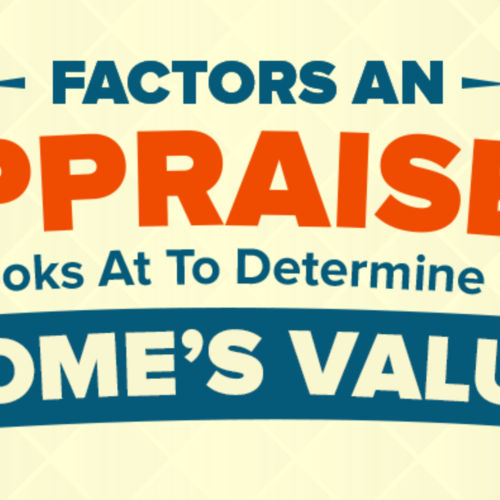Homeownership in the Bay Area is a great achievement, but it comes with its fair share of responsibilities. As a homeowner, you need to be prepared for regular maintenance and repairs to keep your home in top shape. Setting aside a specific budget for home maintenance is essential to ensure that you can address routine upkeep and unforeseen repairs promptly. In this article, we will discuss the factors to consider when creating a home maintenance budget in the Bay Area.
Importance of Home Maintenance
Home maintenance is non-negotiable if you want to prevent deterioration and slow down the general wear and tear of your property. Routine maintenance, small repairs, and fixes are crucial to keep your home in excellent condition. Some common maintenance tasks include mowing the lawn, treating grass, pruning trees, fixing leaky faucets, cleaning out gutters and vents, replacing HVAC filters, cleaning windows and siding, power-washing your deck or patio, cleaning dryer ducts, repainting walls, inspecting fire extinguishers, and oiling door hinges.
It’s important to note the distinction between home maintenance and home renovation or upgrades. While maintenance focuses on the regular upkeep of your home, renovations or upgrades aim to improve or change specific aspects of your property. However, there can be overlap between the two, such as when upgrading a leaky faucet to a nicer fixture.
Determining the Budget: The 1% Rule and the Square Footage Rule
Now that we understand the importance of home maintenance, let’s explore two popular rules for determining how much to set aside for this purpose: the 1% rule and the square footage rule.
- The 1% Rule: This rule suggests setting aside 1% of the purchase price of your home for ongoing maintenance. For example, if your home costs $300,000, you should budget $3,000 per year for maintenance. However, this rule has limitations as it does not account for market conditions or the initial condition of your property. Nevertheless, it provides a safe estimate for maintenance savings.
- The Square Footage Rule: According to this rule, homeowners should budget $1 per square foot, per year for maintenance. This estimate takes into consideration the size of your home, which remains constant. For instance, if you live in a 3,000-square-foot home, your annual maintenance budget would be $3,000. While more consistent than the 1% rule, the square footage rule also fails to consider other factors that may affect your maintenance and repair expenses.
Factors Affecting Your Home Maintenance Budget
When setting up a home maintenance budget in the Bay Area, several factors should be taken into account. These factors will help you determine a more accurate estimate for your specific circumstances. Let’s explore these factors in detail:
- Age and Condition of the Home: The age and condition of your home play a significant role in determining maintenance costs. Older homes, especially those built 10 to 20 years ago, generally require more maintenance compared to newer constructions. Older homes may need major structural, electrical, roofing, or plumbing upgrades to keep them up to code. On the other hand, newer homes or recently renovated properties may require less maintenance and repairs in the first few years. For newer homes, the 1% rule can be a suitable range, while older homes may require a higher percentage, such as 3-4%.
- Home Size or Square Footage: The size of your home directly affects maintenance costs. Larger properties, such as single-family homes in the suburbs, generally require more upkeep than smaller condos or tiny homes. With more interior and exterior space, larger homes entail additional maintenance responsibilities.
- Weather or Environment and Location: The weather and environment in the Bay Area can impact maintenance requirements. Factors such as snow, ice, temperature, humidity, sun exposure, rain damage, wind damage, and other wear and tear issues influenced by local weather conditions will affect your home’s upkeep and repairs. For instance, regions with harsh winters may require more funds allocated to snow removal costs, while coastal areas prone to storms may necessitate additional paint and roofing upkeep. Humid regions are more susceptible to mold and mildew, increasing maintenance needs.
- Building Materials: The building materials used in your home can influence maintenance costs. Some materials require more frequent upkeep than others and may be more prone to damage. Consider the materials used in your home’s construction when estimating your maintenance budget.
- Family Size: The number of people living in your household also affects maintenance requirements. Larger families, especially those with small children, may experience more wear and tear, leading to a higher frequency of minimal touch-ups and repairs. Take your family size into account when creating your maintenance budget.
Tips for Creating an Effective Home Maintenance Budget
Now that we have discussed the factors to consider, let’s explore some tips for creating an effective home maintenance budget in the Bay Area:
- Research Local Costs: Research local costs for maintenance and repair services in the Bay Area. Understanding the average expenses in your area will help you create a more accurate budget.
- Prioritize Maintenance Tasks: Prioritize maintenance tasks based on their urgency and potential impact on your home’s value and safety. Addressing critical issues first will help you allocate your budget effectively.
- Plan for Seasonal Maintenance: Consider seasonal maintenance requirements, such as HVAC inspections and servicing before the summer and winter seasons. Planning for these tasks in advance will ensure that your home is prepared for the changing weather conditions.
- Save for Major Repairs: Set aside additional funds for major repairs that may arise unexpectedly. Having a contingency fund will help you handle significant repairs without causing financial strain.
- Regularly Review and Adjust: Regularly review your home maintenance budget and make adjustments as necessary. As your home ages or your family size changes, you may need to allocate more or less money for maintenance.
- Do It Yourself: If you have the necessary skills and knowledge, consider tackling some maintenance tasks yourself. DIY projects can help save money on labor costs, but make sure to assess your abilities and safety precautions before attempting any repairs.
- Take Advantage of Warranties: If your home or specific appliances have warranties, make sure to utilize them when necessary. Understanding the coverage and duration of warranties can help reduce your maintenance expenses.
Conclusion
Creating a home maintenance budget is crucial for Bay Area homeowners to ensure the longevity and value of their properties. By considering factors such as the age and condition of the home, home size, weather and environment, building materials, and family size, homeowners can estimate their maintenance and repair costs more accurately. Following the 1% rule or the square footage rule can provide a starting point, but it’s essential to adjust the budget based on individual circumstances. By proactively planning and budgeting for home maintenance, homeowners can avoid costly surprises and preserve the beauty and functionality of their homes in the Bay Area.





